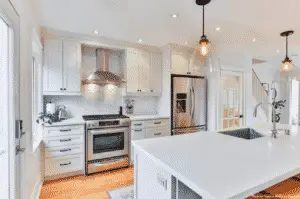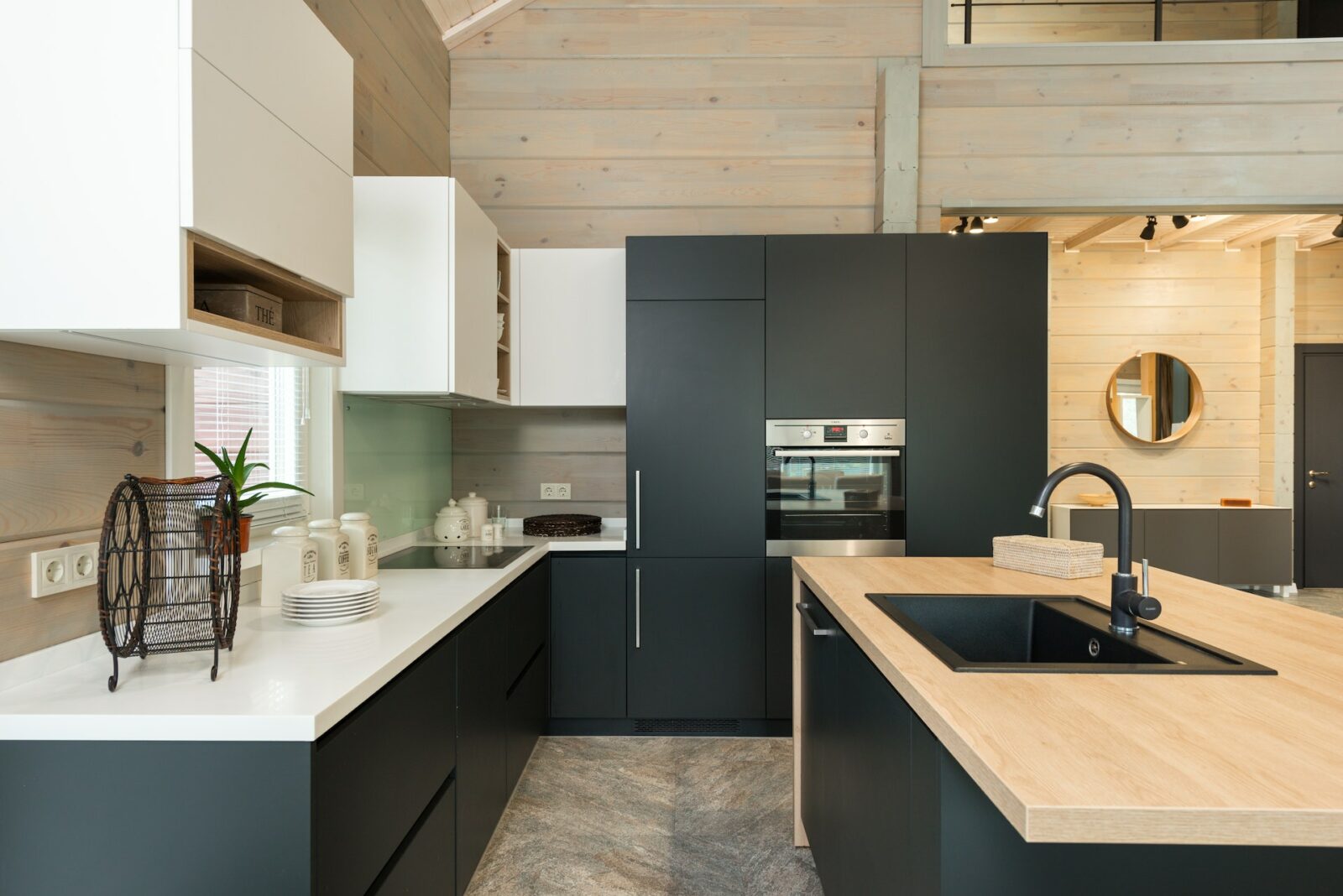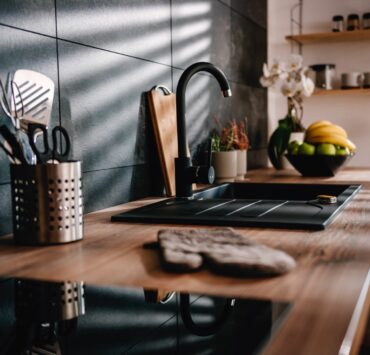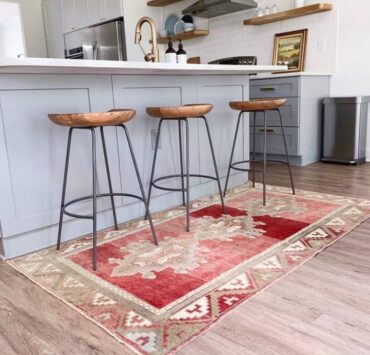A kitchen faucet is an indispensable element to a fully functioning kitchen. It plays a central role in food prep and kitchen clean-up. As a daily fixture used multiple times a day, a kitchen faucet that works well and works for you is worth buying. Here’s everything about how to buy kitchen faucet.
[ez-toc]What Is The Best Time Buy A Kitchen Faucet
Apart from a kitchen remodel or simply wanting a new kitchen faucet (which is reason enough to buy one), keep an eye out for physical damage that indicates replacing your kitchen faucet is in order. A good faucet can last you up to 15 years, but minor repairs are expected throughout its lifespan. You can expect rusting, leaking and poor water flow as normal wear and tear. All of these issues should be repaired immediately.
When repair becomes more trouble than it’s worth, it’s high time to buy a new faucet. This saves you from the headache that is a faulty faucet and will lower your water bill.
Things To Consider Before Buying
-
Flow Rate
The flow rate of a kitchen faucet refers to how much water flows through it within a minute. This is measured in GPM, gallons per minute. Keep in mind that the flow rate of faucets available to you will vary depending on where you live.
The average flow rate for faucets ranges between 1.0 GPM to 2.2 GPM. Due to water conservation efforts, the maximum flow rate for both kitchen and bathroom faucets is set at 2.2 GPM. If you live in an apartment, check in with local building codes for their approved faucet flow rate. This will narrow down the type of faucet you want and that your living space will approve.
-
Understand The Sink Configuration
To state the obvious, your faucet should be able to fit into your sink according to its pre-drilled holes and the plumbing. Take a look at your current sink to know how many holes it has. These pre-drilled holes are where you’ll be installing your faucet into. Choose a faucet that can be fitted into your sink from the exterior and the piping beneath.
As a general rule, the faucet should fit to the sink. Not the other way around. We don’t recommend creating more holes into your sink to accommodate a new faucet. New holes drilled into a sink may not line up properly with the piping underneath and can cause unnecessary issues with the water flow and drainage.
Find your current sinks configuration and find a faucet to match.
Types Of Kitchen Faucets
One of the fun parts of buying a kitchen faucet is exploring the different types available. Faucets come in all kinds of styles. You get to choose the length and shape of a spout, the look of the handle, the finish etc. There are also functional options to consider such as pull down-spouts, pull-out spouts, etc. Here’s a quick overview on the types of kitchen faucets you’ll encounter when buying one.
Handles
- Single-handle faucets are simple and direct. They take up less space without sacrificing the functionality of water flow or temperature adjustment.
- Double-handle faucets are especially beneficial for those who like to adjust hot and cold water separately. Double handle faucets look great in larger kitchen sinks.
- Touchless faucets are a modern and premium option for your kitchen sink. With a motion sensor fitted into the faucet, you don’t have to worry about manually turning water on or off. The drawback with hands-free though is to adjust the temperature, you’ll need to turn a dial underneath the sink.
Spouts
- Stationary spouts are fixed to the sink and can be moved left and right.
- Pull-down and pull-out spouts allow you to pull down a hose. You can adjust the water to come out as a stream or a spray and easily retract it back into the faucet.
- Straight spout faucets are faucets that have a long horizontal extension that comes out from the main body of the faucet. It’s meant to give a long reach with a low profile. This gives you a compact and affordable faucet option.
- Gooseneck spout faucets are the opposite of straight spout faucets. They extend vertically from the main body of the faucet and curve down. Very much like, you guessed it, a goose neck. Gooseneck spout faucets pair well with deep basins, giving plenty of sink clearance for filling and washing up large kitchen items.
Mounts
- Deck mount faucets can be installed into your sink or countertop. It’s important to know how your sinks plumbing lines up as this will determine if you can mount a faucet that isn’t attached to the sink.
- Wall mount faucets are just as they sound. They’re mounted to the wall with the plumbing coming through the well. Although they take a little more planning and work than deck mount faucets, wall mount faucets give you a beautiful and seamless sink set up.
Costs Of Buying And Installing A Kitchen Faucet
If you can DIY the installation of a kitchen faucet, it will cost you anywhere as low as $50 for a simple straight spout single handle faucet to $2000 for a premium touchless faucet. The price range of faucets vary greatly as the size, design and finish will determine its cost.
If you hire a contractor to install your kitchen faucet, most plumbers will charge $100 to $200 per hour of work.
Final Thoughts
The main goal to keep in mind when looking at how to buy kitchen faucet is to find one that you like and that will fit into your current sink. When it comes to a fixture that’s so frequently used like a faucet, style and functionality matter!
Related posts:
 Your Guide to the Best DIY Budget Kitchen Remodel Ideas
Your Guide to the Best DIY Budget Kitchen Remodel Ideas
 Outdated Kitchen Trends that You Must Stay Away From in 2022
Outdated Kitchen Trends that You Must Stay Away From in 2022
 Can You Paint Tile Backsplash?
Can You Paint Tile Backsplash?
 Small Space, Big Style: A Guide to Mobile Home Kitchen Remodel
Small Space, Big Style: A Guide to Mobile Home Kitchen Remodel
 How Tall is a Kitchen Island? And Many More Frequently Asked Questions around Islands Answered by Experts
How Tall is a Kitchen Island? And Many More Frequently Asked Questions around Islands Answered by Experts



